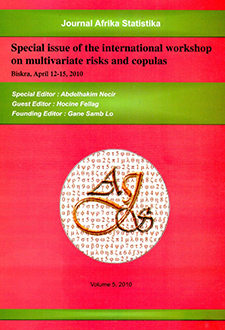Abstract
Let $Y_1,Y_2\dots$ be independent observations of the income variable of some given population, with underlying distribution $G$. Given a poverty line $Z$, then for each $n\geq 1$, $q=q_n$ is the number of poor in the population. The general form of poverty measures used by economists to monitor the welfare evolution of this population is $$P_n=\frac{1}{a(q)b(n)}\sum^q_{j=1}c(n,q,j)d\left(\frac{Z-Y_{j,n}}{Z}\right).$$ This class includes the most popular poverty measures like the Sen, Shorrocks and Greer-Foster-Thorbecke statistics. We give a complete asymptotic normality theory in the framework of extreme value theory. In this paper, the poverty intensity is studied in two simple cases: Pareto and exponential distributions. Simulations and applications to the Senegalese data are given.
Citation
Gane Samb Lo. Serigne Touba Sall. "The asymptotic theory of the poverty intensity in view of extreme value theory for two simple cases." Afr. Stat. 2 (1) 44 - 58, 2007. https://doi.org/10.4314/afst.v2i1.46866
Information





